| Listing 1 - 10 of 13 | << page >> |
Sort by
|
Book
ISBN: 2110028629 Year: 1992 Publisher: Paris Documentation française
Abstract | Keywords | Export | Availability | Bookmark
 Loading...
Loading...Choose an application
- Reference Manager
- EndNote
- RefWorks (Direct export to RefWorks)
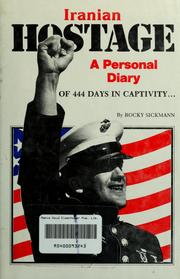
ISBN: 0881030007 Year: 1982 Publisher: Topeka, Kan. Crawford Press
Abstract | Keywords | Export | Availability | Bookmark
 Loading...
Loading...Choose an application
- Reference Manager
- EndNote
- RefWorks (Direct export to RefWorks)
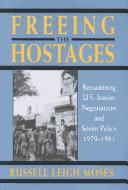
ISBN: 0822939193 0585098883 Year: 1996 Publisher: Pittsburgh, Pa. : University of Pittsburgh Press,
Abstract | Keywords | Export | Availability | Bookmark
 Loading...
Loading...Choose an application
- Reference Manager
- EndNote
- RefWorks (Direct export to RefWorks)
On November 4, 1979, militant students and revolutionaries occupied the U.S. embassy in Tehran, taking American diplomats hostage and demanding the end of contact with the United States and the extradition of the shah to Iran. The occupation lasted 444 days and galvanized the attention of the world and of the Carter administration. Despite concerted efforts on the part of the Carter administration, negotiations - public and private, direct and through third parties - stalled. Russell Moses evaluates the strategies and policies of the Carter administration, Soviet behavior during the crisis, and Iranian attitudes, assumptions, and actions, providing new interpretations of how negotiations work or don't work and of the assumptions underlying each side's position. Because President Carter and his advisers where never able to identify the precise nature of factional infighting within the Iranian leadership nor fully comprehend the Ayatollah Khomeini's understanding of the hostage situation and negotiations, their efforts to compel the hostages' release were doomed to fail. Moses contends that a fragile consensus for settling the crisis that developed within Iran in early 1981 - born more by accident than by U.S. design - led to the release of the hostages. Freeing the Hostages is based primarily on interviews with high-level officials in the Carter administration, new information about Iranian actions, and a fresh analysis of Soviet behavior during the hostage crisis. Much of it challenges traditional interpretations of the hostage crisis as well as accepted notions of the course and conduct of negotiations.
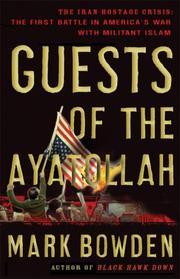
ISBN: 0802143032 1555846084 Year: 2007 Publisher: New York : Grove Press,
Abstract | Keywords | Export | Availability | Bookmark
 Loading...
Loading...Choose an application
- Reference Manager
- EndNote
- RefWorks (Direct export to RefWorks)
A chronicle of the Iran hostage crisis, America's first battle with militant Islam. On November 4, 1979, a group of radical Islamist students, inspired by the revolutionary Iranian leader Ayatollah Khomeini, stormed the U.S. embassy in Tehran. They took 52 Americans hostage, and kept nearly all of them captive for 444 days. Journalist Bowden tells the story through the eyes of the hostages, the soldiers in a new special forces unit sent to free them, their radical, naïve captors, and the diplomats working to end the crisis. Bowden takes us inside the hostages' cells and inside the Oval Office for meetings with President Carter and his exhausted team. We travel to international capitals where shadowy figures held clandestine negotiations, and to the deserts of Iran, where a courageous, desperate attempt to rescue the hostages exploded into tragic failure--From publisher description.
Iran Hostage Crisis, 1979-1981 --- Iran Hostage Crisis, 1979-1981 --- Hostages --- United States --- Iran --- United States --- Foreign relations --- Foreign relations --- Armed Forces --- Search and rescue operations.
Book
Year: 2015 Publisher: Washington : U.S. Government Publishing Office,
Abstract | Keywords | Export | Availability | Bookmark
 Loading...
Loading...Choose an application
- Reference Manager
- EndNote
- RefWorks (Direct export to RefWorks)
Iran Hostage Crisis, 1979-1981. --- Military assistance, American --- Iran Hostage Crisis (1979-1981) --- Iran --- United States --- Iran. --- United States. --- Foreign relations
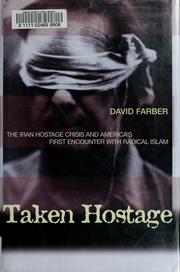
ISBN: 0691119163 069112759X 128212952X 1400826209 9786612129520 Year: 2005 Publisher: Princeton Oxford Princeton University Press
Abstract | Keywords | Export | Availability | Bookmark
 Loading...
Loading...Choose an application
- Reference Manager
- EndNote
- RefWorks (Direct export to RefWorks)
Iran Hostage Crisis, 1979-1981 --- Islam and politics --- Hostages --- Iran --- United States --- Foreign relations --- 1977-1981
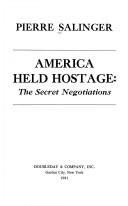
ISBN: 038517750X Year: 1981 Publisher: Garden City Doubleday
Abstract | Keywords | Export | Availability | Bookmark
 Loading...
Loading...Choose an application
- Reference Manager
- EndNote
- RefWorks (Direct export to RefWorks)
Iran Hostage Crisis, 1979-1981 --- Salinger, Pierre. --- Iran --- United States --- Foreign relations
Book
ISBN: 9782271122728 2271122724 Year: 2022 Publisher: Paris : CNRS Éditions,
Abstract | Keywords | Export | Availability | Bookmark
 Loading...
Loading...Choose an application
- Reference Manager
- EndNote
- RefWorks (Direct export to RefWorks)
4 novembre 1979 : quelques mois après la Révolution islamique, près de 300 étudiants enjambent le mur d'enceinte de l'ambassade américaine à Téhéran et prennent en otages 66 diplomates et employés. Pourquoi une rupture si brutale et spectaculaire des relations entre l'Iran et les États-Unis?? Pour répondre, Yann Richard s'appuie sur des sources américaines mais aussi iraniennes. En 1945 alors que le jeune Mohammad-Rezâ Pahlavi vient de monter sur le trône, les États-Unis sont perçus comme les seuls capables de libérer l'Iran de la menace soviétique et de la lourde tutelle britannique. Pourtant, la position américaine montre vite son ambiguïté, notamment lors du coup d'État de 1953 qui renversa le premier ministre Mossadeq, promoteur de la nationalisation du pétrole. Maintenu au pouvoir grâce aux Américains, le shah devint leur meilleur allié dans la région. Enrichi par les revenus du pétrole et à la tête d'une immense armée, il gouverne seul. Des manifestations violemment réprimées précipitent sa chute et ouvrent la voie en 1979 à l'instauration par Khomeyni de la République islamique d'Iran. La posture de l'Américain armé de bons sentiments s'était transformée en une figure de dominateur sans scrupules. Les Iraniens avaient contemplé avec envie la prospérité hollywoodienne et consumériste. On leur montra la marque du collier qui tenait l'Iran enchaîné. C'est bien le sens de la Révolution islamique et de la prise d'otages que de rompre cette chaîne.

ISBN: 0395430860 Year: 1991 Publisher: Boston Houghton Mifflin
Abstract | Keywords | Export | Availability | Bookmark
 Loading...
Loading...Choose an application
- Reference Manager
- EndNote
- RefWorks (Direct export to RefWorks)
Political sociology --- Iran Hostage Crisis, 1979-1981 --- Terrorism --- Political aspects --- United States --- Politics and government --- 1977-1981 --- 1981-1989 --- Carter, Jimmy

ISBN: 0300032315 0300032331 0300035845 Year: 1985 Publisher: New Haven ; London Yale University Press
Abstract | Keywords | Export | Availability | Bookmark
 Loading...
Loading...Choose an application
- Reference Manager
- EndNote
- RefWorks (Direct export to RefWorks)
Violent crimes --- Government policy --- Iran Hostage Crisis, 1979-1981 --- Otages américains en Iran, Affaires des , 1979-1981 --- Otages américains en Iran, Affaires des , 1979-1981 --- Polemology --- Iran --- United States --- Iran. Buitenlandse betrekkingen. Verenigde Staten. --- Etats-Unis. Relations extérieures. Iran. --- Iran. Relations extérieures. Etats-Unis. --- Verenigde Staten. Buitenlandse betrekkingen. Iran. --- United States of America
| Listing 1 - 10 of 13 | << page >> |
Sort by
|

 Search
Search Feedback
Feedback About UniCat
About UniCat  Help
Help News
News